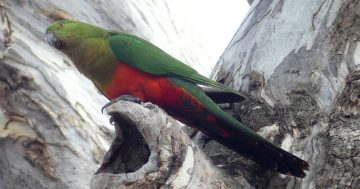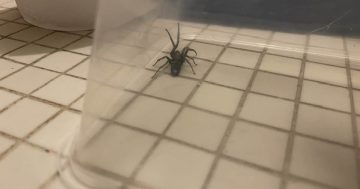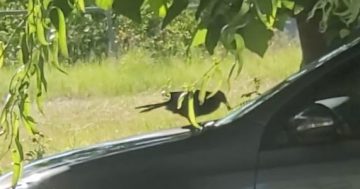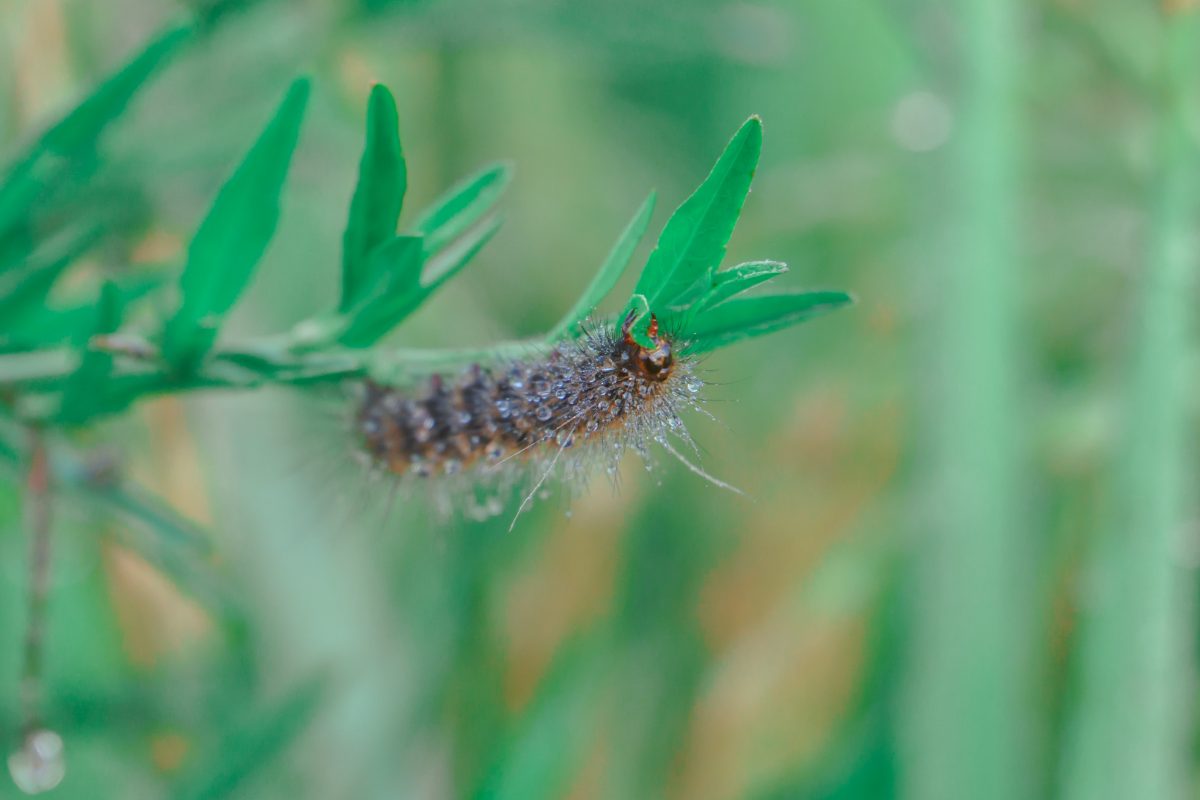
Spitfire, sawfly larvae. Photo: Muhamad Farihin.
It has always been high on the list of terrifying Australian fauna. For starters, it’s a black worm with thick bristly hairs – a glance is enough to make the skin crawl. Then there is the name: Spitfire.
It turns out the scary spitfires also love rain, which is why you may have noticed more around Canberra than usual this year.
As you may have gathered from the caterpillar-like shape, spitfires are the larvae of a group of insects related to wasps, called sawflies. Canberra naturalist Ian Fraser describes them as looking like “dumpy wasps” with a wingspan of two to four centimetres.
And while spitfires don’t actually spit fire, sawflies do actually saw.
“In spring, the female sawfly cuts a slit in the bark of eucalypt trees with her jaws, and she then lays her eggs in this slit.”
There are different species, but the most common to Canberra is the Steel-Blue Sawfly, with a dark metallic-blue body. The eggs all hatch at roughly the same time and the fledgling larvae set about gorging themselves on eucalyptus leaves, and with so much rain, Ian says, “they’re cashing in”.

A ‘swarm’ of spitfires on a tree in Forde, ACT. Photo: Alex Gorringe.
“That’s the interesting thing, because eucalyptus leaves are highly toxic, very few animals can eat them,” Ian explains.
“But the larvae can not only evade the toxins but also store them in their body in a sack in the foregut. They then use them as a defence mechanism. If they feel threatened, they wiggle their tail and exude mustard-coloured drops of this toxin from their mouths.”
So it may be more like foaming-at-the-mouth than spitting, but it does the trick. Only a few predators bother going further. Gang-gang cockatoos, for instance, have learned how to rip out the poison sack and eat the rest.
“But that’s about it – spitfires are pretty well protected,” Ian says.
As for humans, Ian says it’s no worse than getting eucalypt sap on the skin.
“Because it’s more concentrated, it might be a bit irritating on the skin, but it’s hard to say. Only if it gets in the eyes or mouth could it be a problem.”
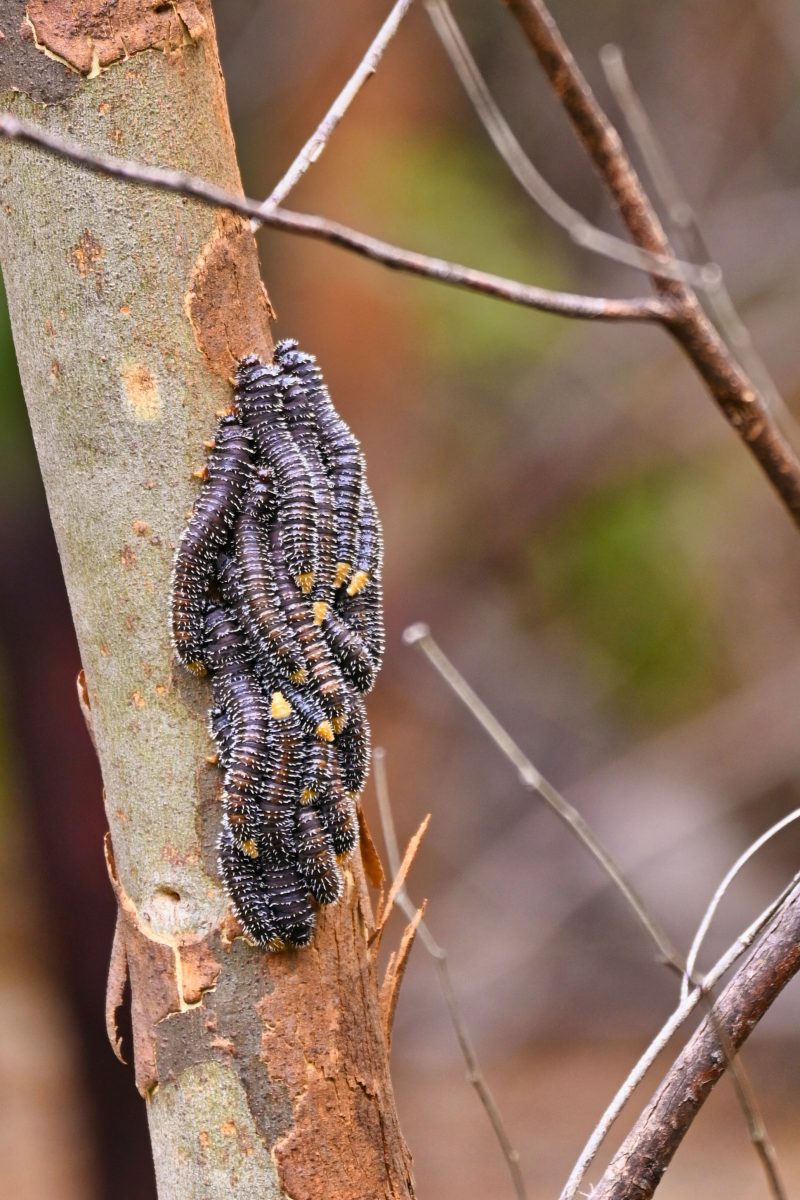
Spitfires up close. Photo: Enguerrand Blanchy.
Although there might be clusters of them high in the gum trees at the moment, later in the season, we can expect them to crawl down from the trees and move across the ground in search of a place to burrow so they can emerge next year as an adult sawfly.
The good news is they have no reason to be inside.
“All they want is a nice, juicy leaf to chew on,” Ian says.
“It’s a funny thing because people have a peculiar repulsion to spitfires and I have no idea why. They’re a fascinating creature of no threat to us or the trees.”
Maybe it’s the name.
Original Article published by James Coleman on Riotact.




